I’ve already reported on the great news that the Sony 135 STF (apodized) A-mount lens covers the GFX sensor with zero vignetting. Now I’m going to look at sharpness, both on and off axis, using a slanted edge and a Siemens Star for a target.
Here’s the scene:
And here’s just the target area, as seen wide open with the GFX 50R, first in the center:
And in the corner:
Particulars:
- ISO 100
- Wide open in STF mode
- Manual exposure, ETTR in live histogram.
- Subject in the center and the upper right corner.
- Manual focusing.
- Six shots at each setting, focusing anew for each shot, picking the best using the Imatest sharpness ranking utility. This method calibrates out focus curvature.
- Developed in Lightroom
- Sharpening set to zero.
- White balance set to gray background on Siemens Star target
- Adobe Color Profile
- Minor exposure adjustments, with same adjustment applied to all images from both lenses, so corner darkening is unaffected.
- Chromatic aberration correction turned off.
- Everything else at default settings
The slanted edge results in the center:
That is quite sharp. Lr’s demosaicing is providing a little sharpening, too. The small microlenses int he GFX 50x cameras are doing their part.
In the corner:
That is distinctly unsharp. But I suspect that corner sharpness is unimportant the way that most people would use this lens.
Now let’s look at how the sharpness varies with angle. First in the center:
The lens is slightly sharper vertically than horizontally, but the differences are small.
In the corner:
The lens is much sharper in the radial direction than in the tangential one.
We can see the same effect when we look at the MTF curves in various directions. In the center:
And in the corner:
For completeness, I’ll include the new Shannon capacity curves. I’m still trying to figure out how best to use these.
In the center:
And in the corner:
It looks to me that this lens will be fine for portraits. I’ll be doing some bokeh tests next.
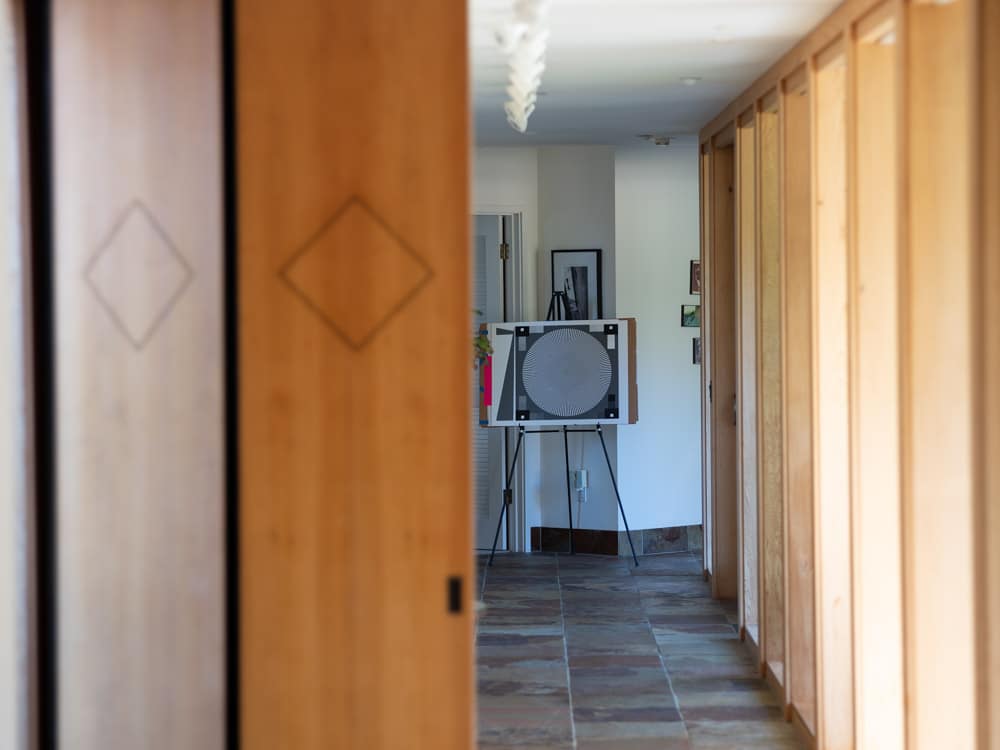
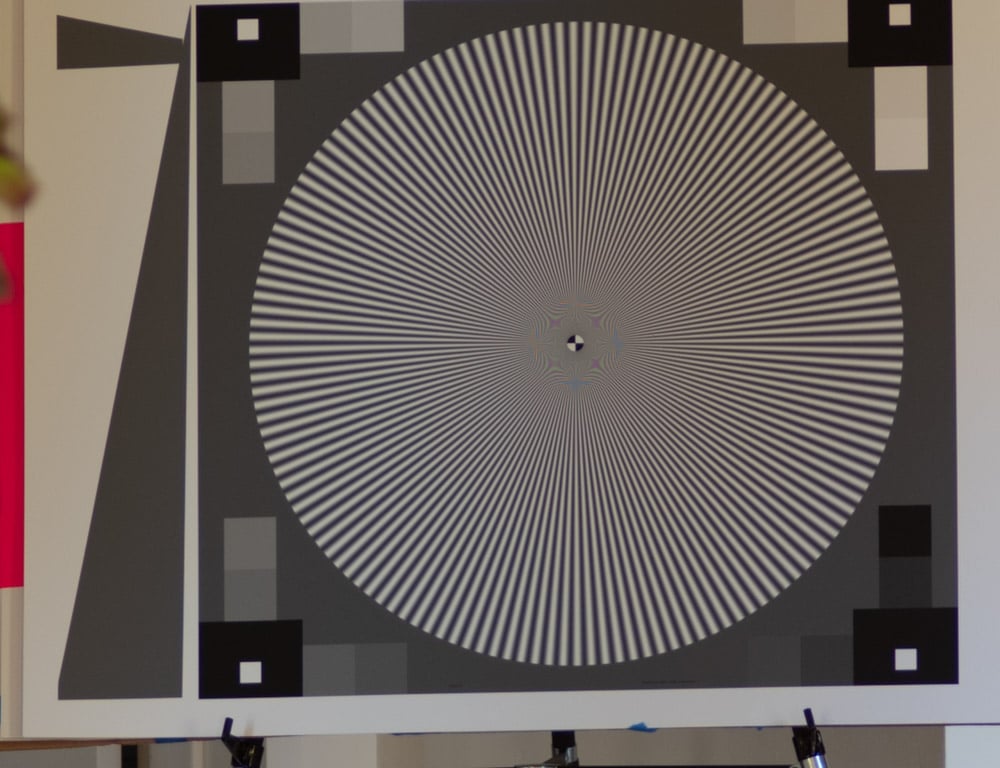
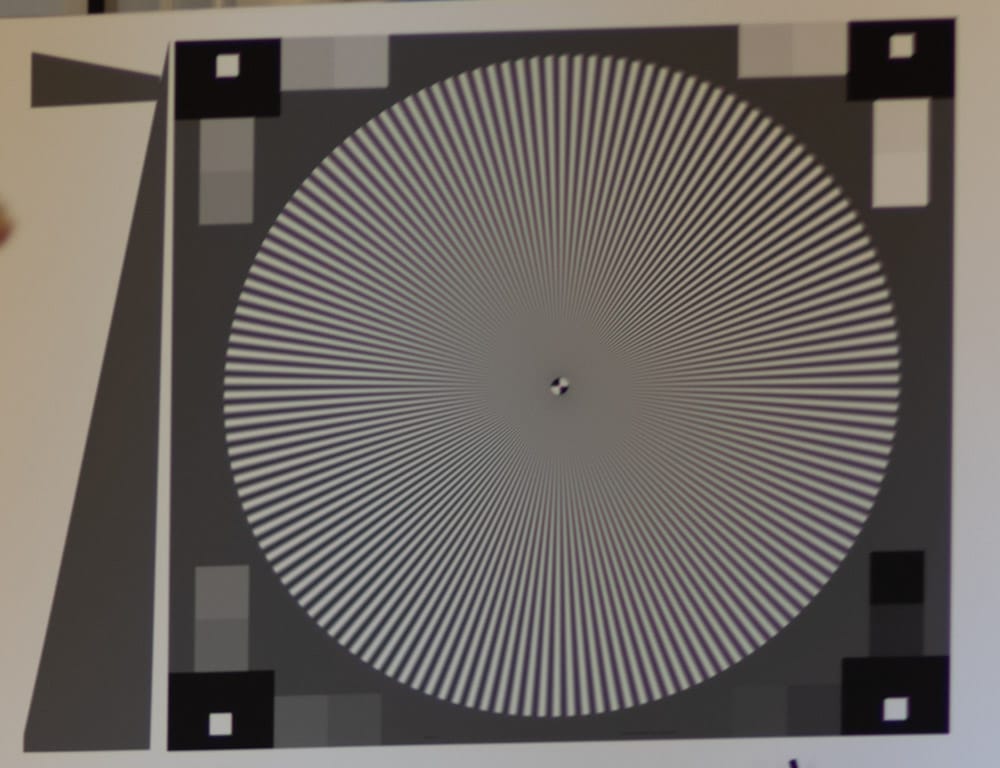
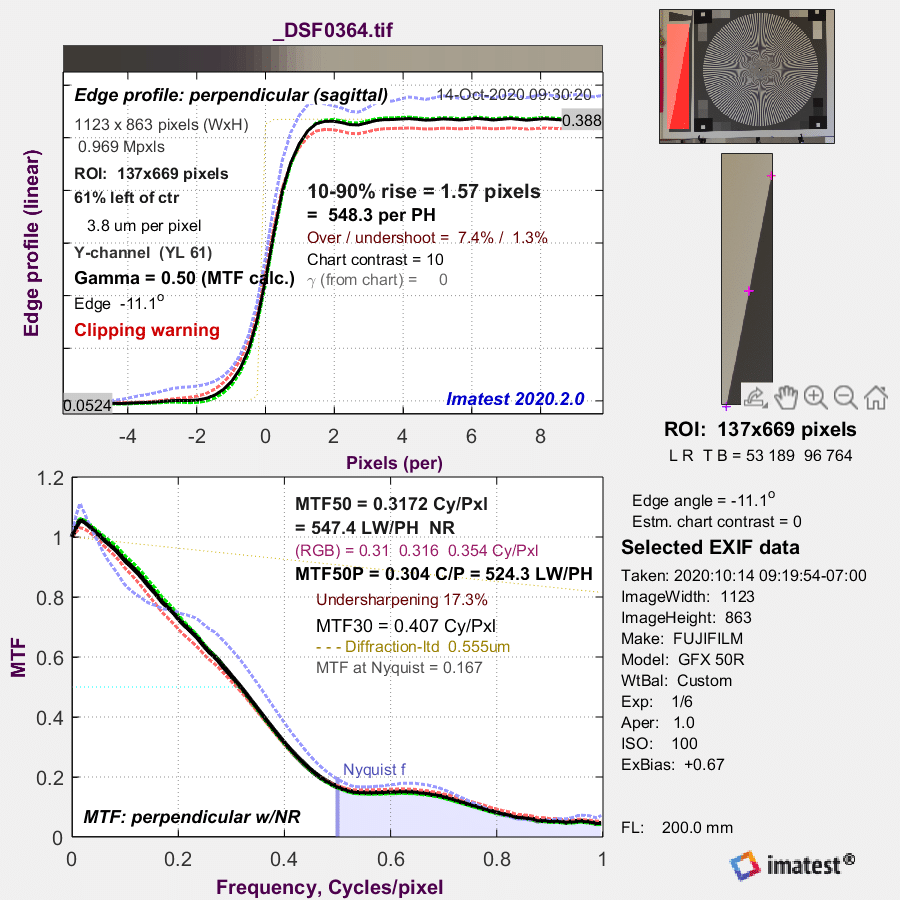
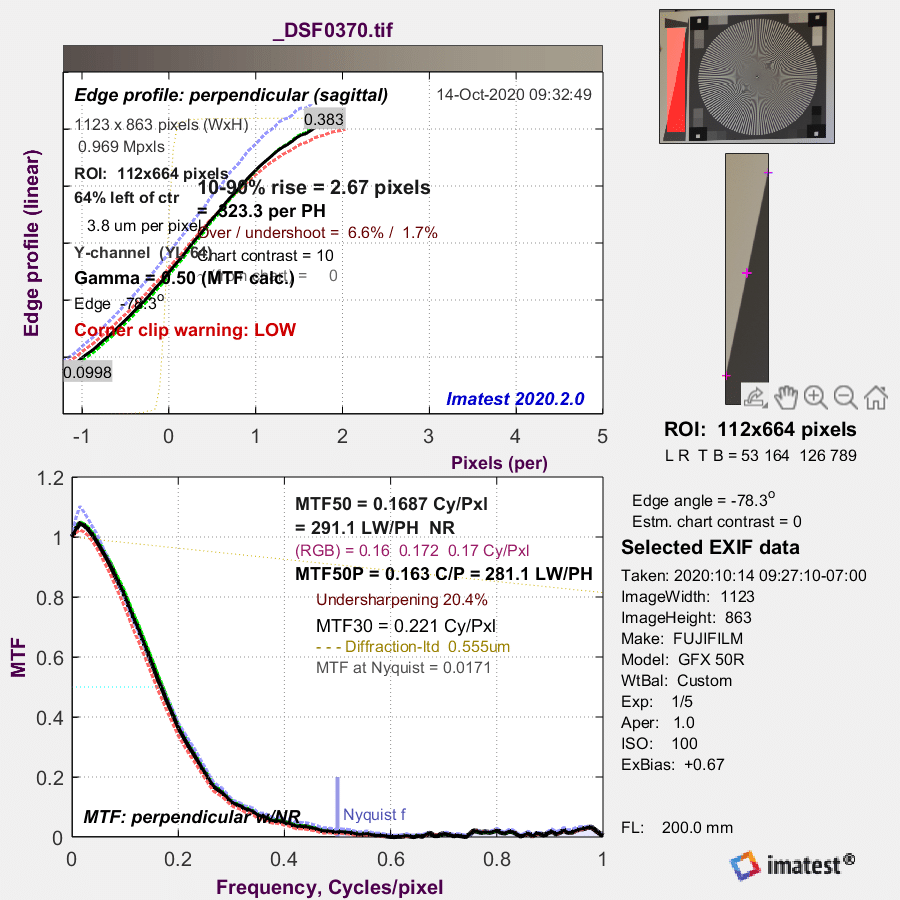
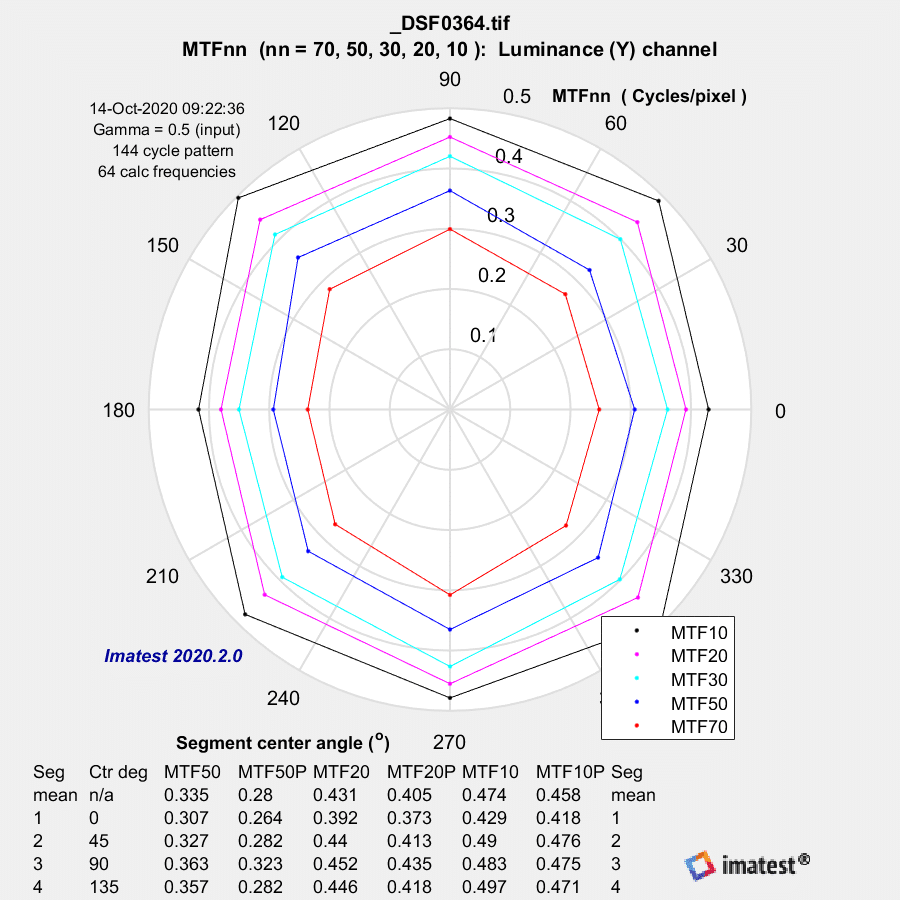
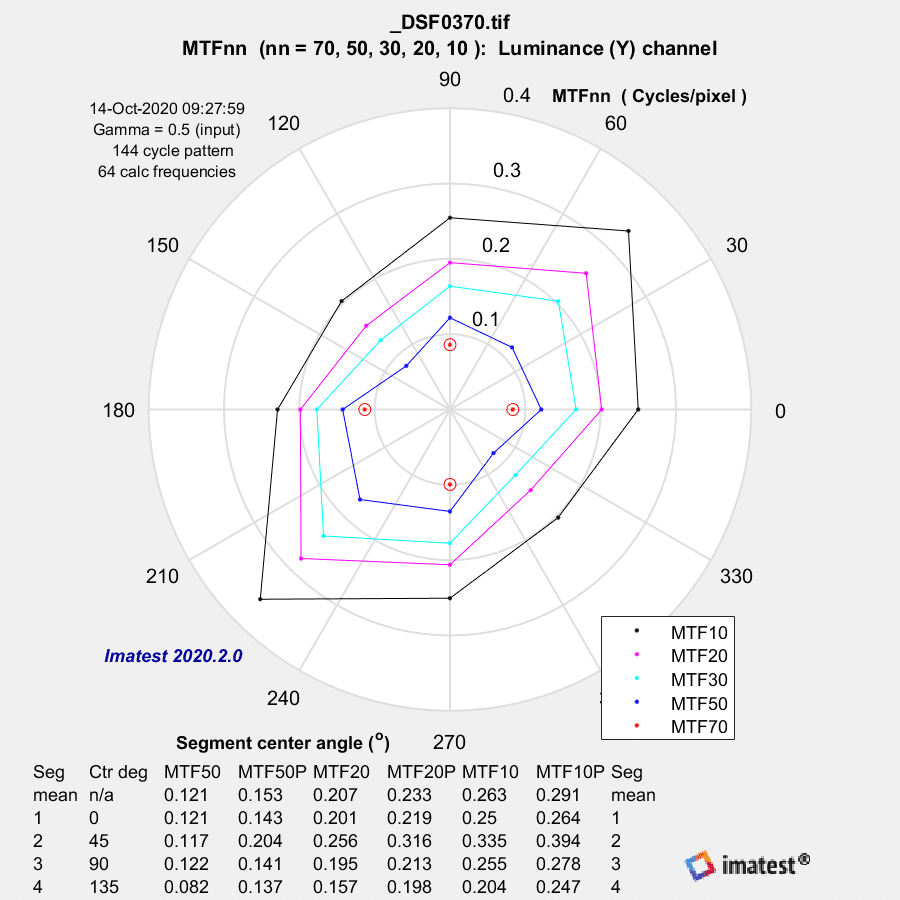
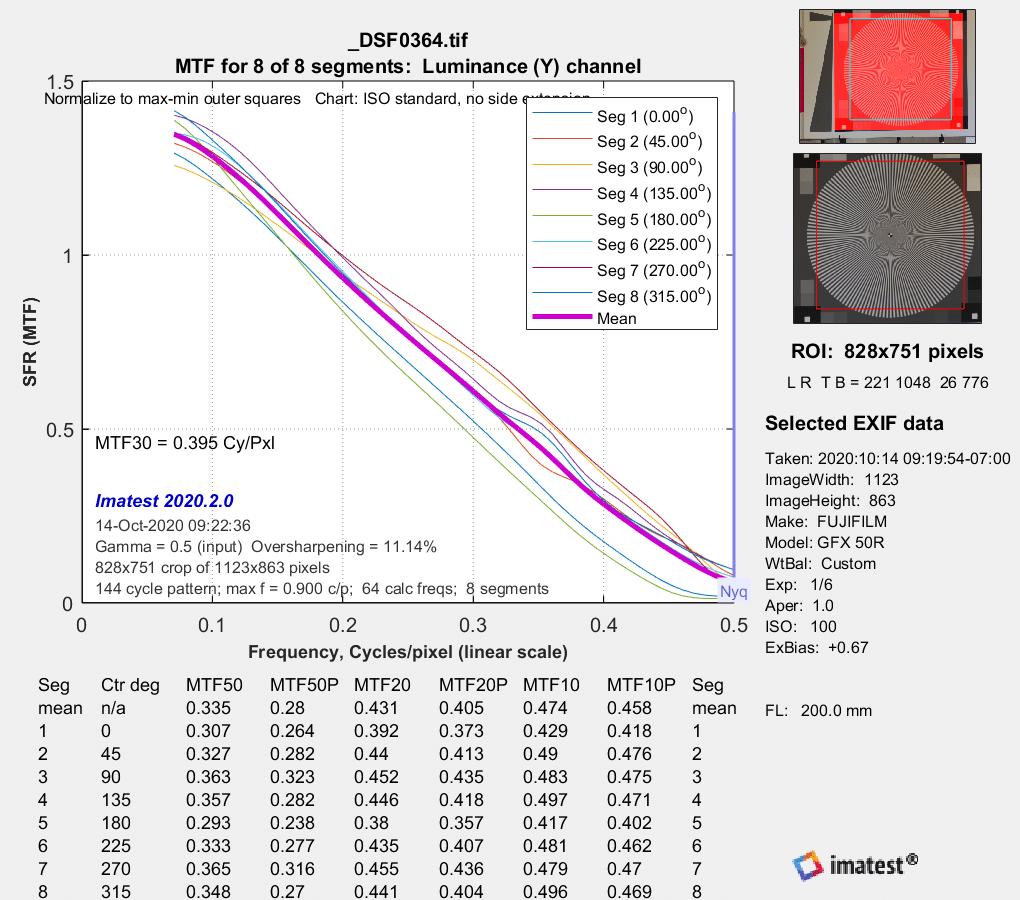
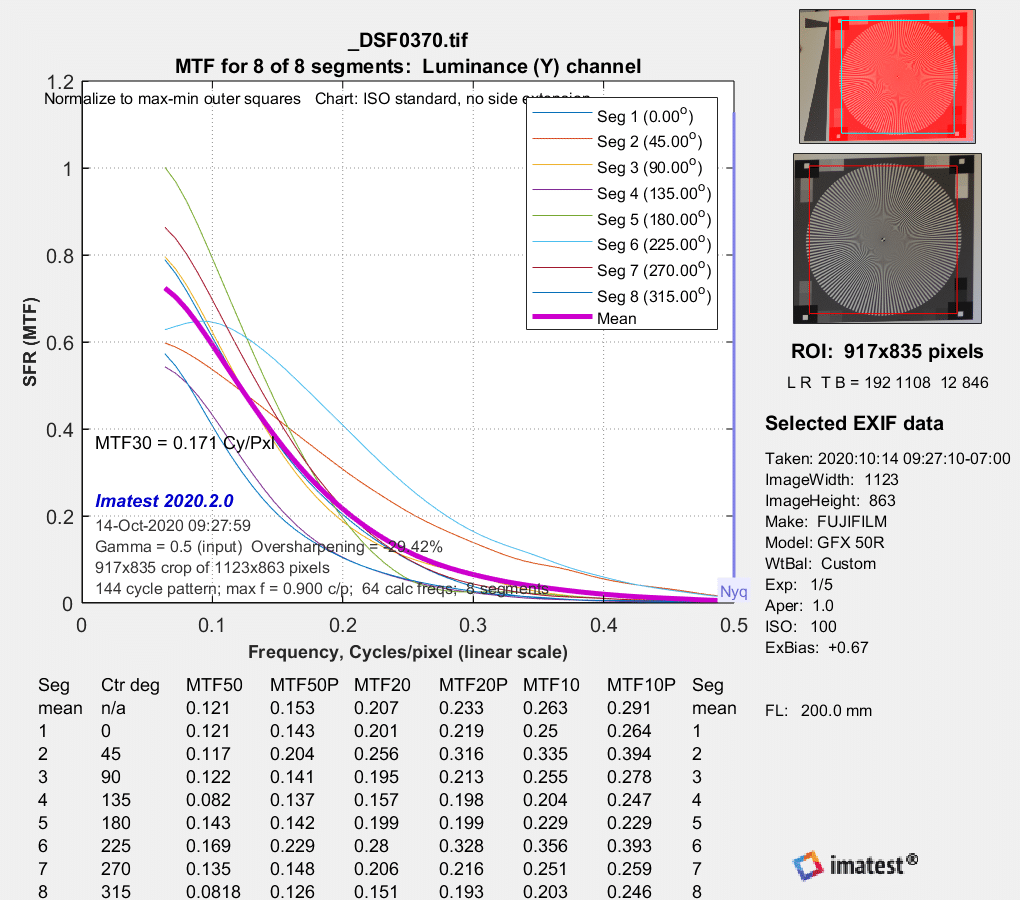
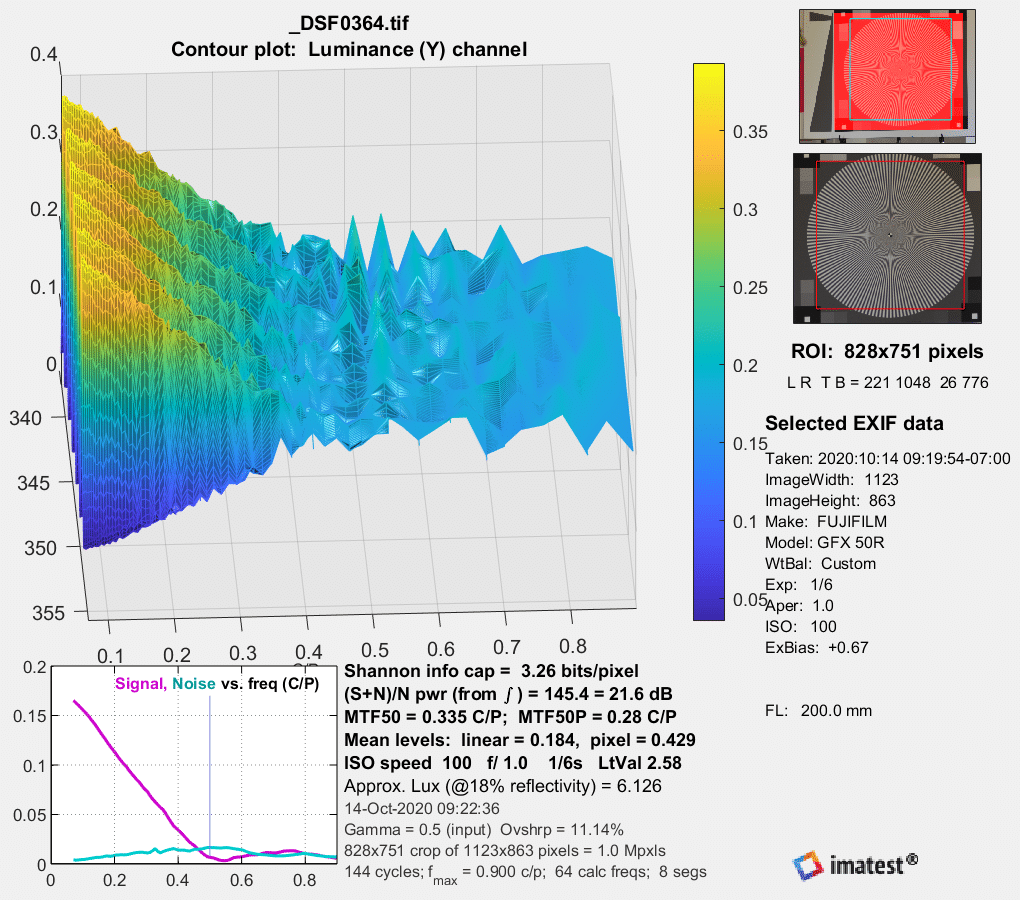
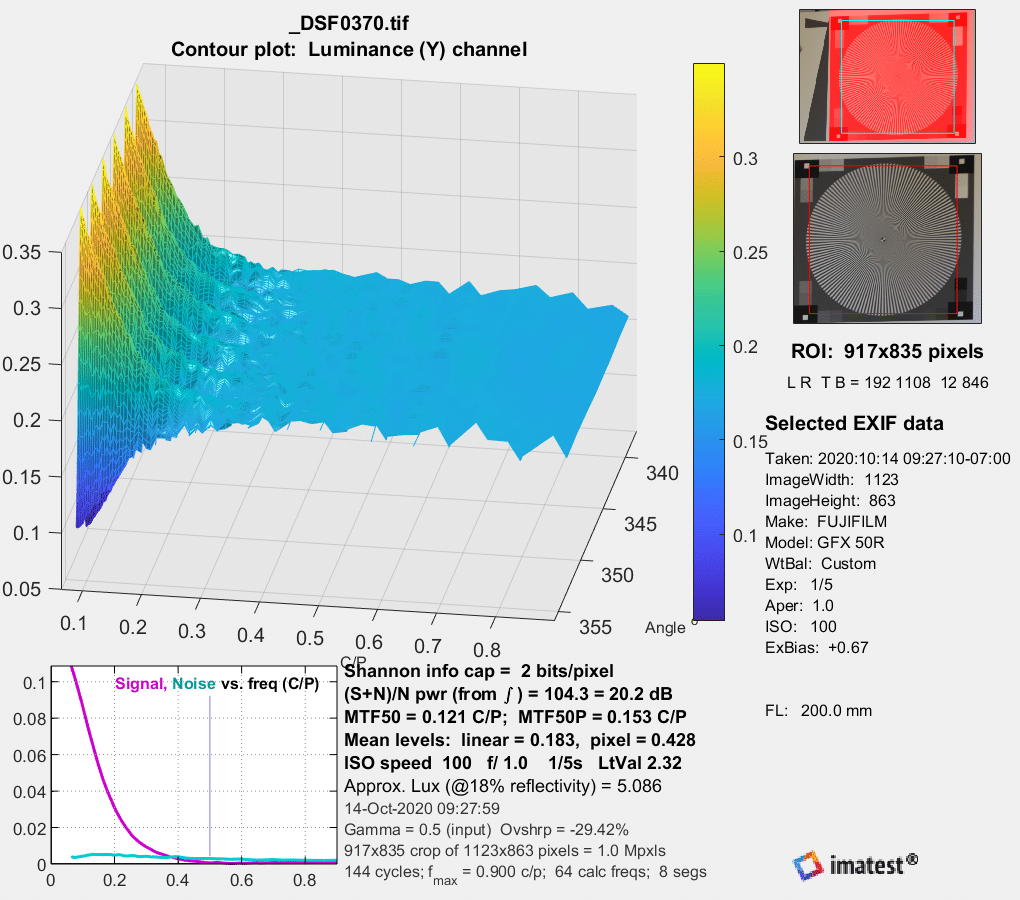
Alexander Häggström says
Is the loss of sharpness in the corners caused by different sagittal and tangential focus planes? Transition point spread functions from the image corner would provide the answer.
I found a good source of information on oblique astigmatism at http://hyperphysics.phy-astr.gsu.edu/hbase/geoopt/coma.html
JimK says
That’s probably a component. There is a lot of astigmatism in the corners; you can see it as you focus there.
K says
Is there any limitation for using 135 stf lens like controlling aperture?
JimK says
The lens aperture can be controlled manually. I think that most people will want to use it wide open, since the STF effect diminishes as it’s stopped down.
K says
How’s the sharpness when you stop the aperture? Still doesn’t improve the sharpness?
JimK says
You mean stop down the aperture? It will probably make the lens sharper until diffraction takes over, but what’s the point of having an STF lens unless you’re going to get the apodization effect?
K says
Well, I wanted to use it to replace GF 110mm F2 for now until I can get it in future so I’m curious to know the optical quality for stopping down especially for corner sharpness.